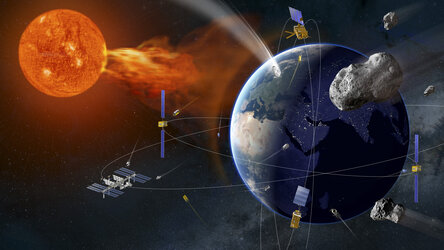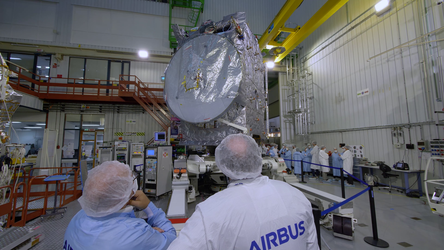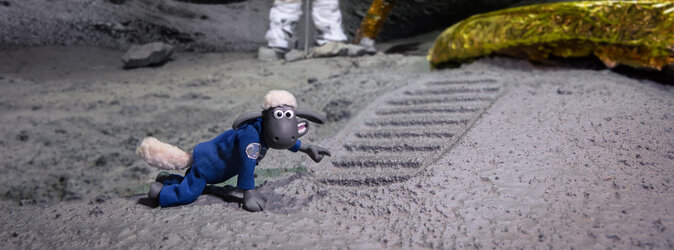ESA and film/TV
It’s likely that most people’s first experiences of ‘space’ are via film or television. Maybe you were a fan of a particular science-fiction series or you remember watching news coverage of a space mission. Many of today’s scientists, engineers and astronauts were inspired by something they saw on TV or in a movie.
The film industry has been fascinated by space exploration since its earliest days. This was probably an extension of the interest in science fiction that goes back even further in literature, and often drew inspiration from the works of Johannes Kepler, Cyrano de Bergerac, or Jules Verne, for example.
In 1902, some 67 years before Neil Armstrong and Buzz Aldrin landed on the Moon, French director Georges Méliès took audiences there with his silent movie Le voyage dans la lune, widely considered to be the first ever sci-fi film.

So while space has always been a source of inspiration for film makers, there are few moments in history that epitomised this fascination as much as the ‘Space Race’ era. The period between the launch of Sputnik 1 to the first Moon landing, saw a huge surge in popularity of space-related films and TV shows, both fantasy and factual.
Depictions of space have evolved over time. Today’s space films have benefited from both several decades of scientific understanding and developments in special effects. However, only a few have attempted to portray the reality of space travel and what we know so far.
Of course, NASA has appeared in countless films and TV series about space, and has even taken part in the production of some of them. But what about ESA? Well, you’d be surprised.
The first film thought to have featured a ‘European space agency’ was the British Gerry Anderson live action production, Journey to the Far Side of the Sun (1969). The first ESA logos to be seen on the big screen were worn on spacesuits in the 1985 sci-fi horror fim Life Force.

ESA began taking part in film productions in the early 2000s, providing expertise as well as access to a number of locations, such as a mission control room at ESTEC in the Netherlands. An ESA consultant served as technical adviser for The Martian (2015) and, indeed, one of the characters was based on ESA astronaut Alexander Gerst. Occasionally, ESA’s role was simpler, such as providing permission to use footage or a logo.
Then in 2019, we upped our game for French filmmaker Alice Winocour’s Proxima. Our astronaut training facilities at EAC in Germany were opened up as a movie set, and employees (including astronauts) were invited to be extras.
Since then, ESA has aimed to be a prime resource for film and TV productions. We can provide footage, props and locations, or lend the mind of an expert. Not only is this a great opportunity to share our missions and programmes with the public, but also helps to produce more realistic, accurate and awe-inspiring films and TV shows.















 Germany
Germany
 Austria
Austria
 Belgium
Belgium
 Denmark
Denmark
 Spain
Spain
 Estonia
Estonia
 Finland
Finland
 France
France
 Greece
Greece
 Hungary
Hungary
 Ireland
Ireland
 Italy
Italy
 Luxembourg
Luxembourg
 Norway
Norway
 The Netherlands
The Netherlands
 Poland
Poland
 Portugal
Portugal
 Czechia
Czechia
 Romania
Romania
 United Kingdom
United Kingdom
 Slovenia
Slovenia
 Sweden
Sweden
 Switzerland
Switzerland














































